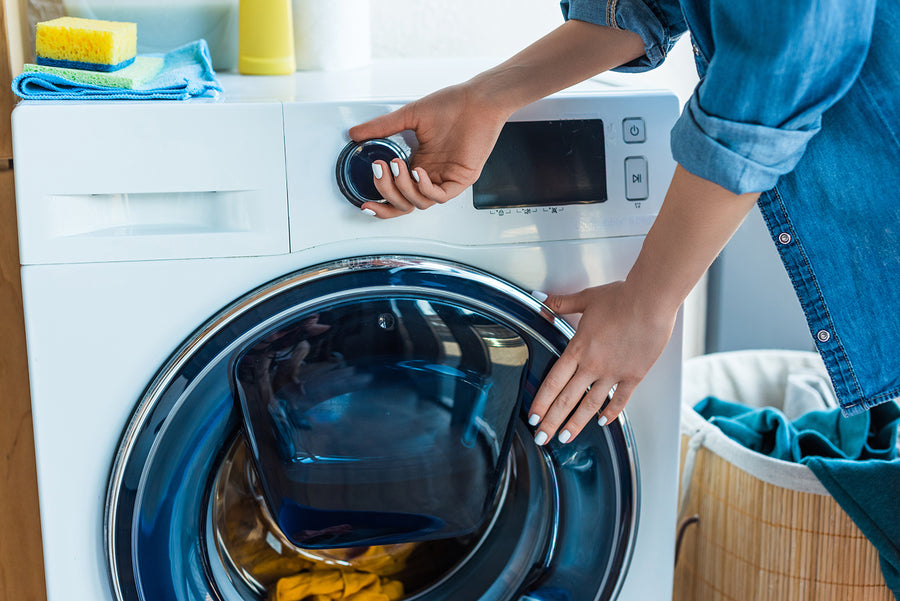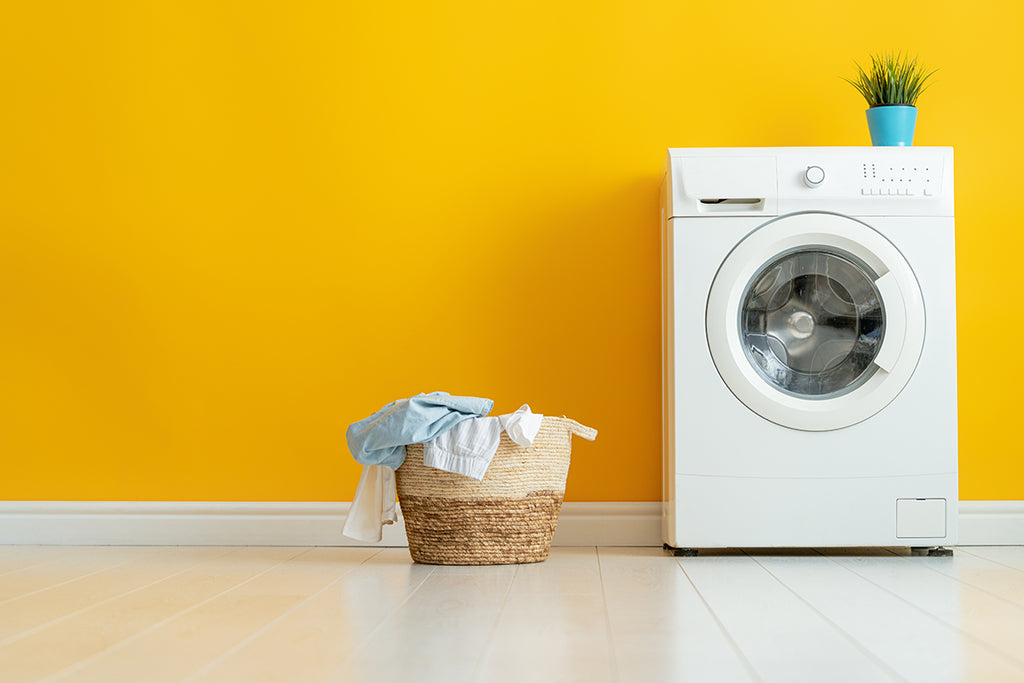Your cart is empty.
Let's change that. Start Shopping
Let's change that. Start Shopping
Nov 1, 2021

You've just done your laundry, but when you open your washing machine, it smells terrible. You clean out the inside, and still, it's got a stench that won't go away. You clean it again, but nothing works.
If you find yourself in this situation, don't fear. You are definitely not alone. It is possible to clean a stinky washing machine.
We’ve got all the info you need on why your washing machine smells and tips and tricks for cleaning and deodorizing it.

There are several reasons why your washing machine may smell. The most likely reason could be that you clean your clothes with strong chemicals. This can leave a residue on the inside of your washing machine, which causes it to smell. A good option could be an eco-friendly laundry detergent that won't leave buildup in your washer.
Another cause of a smelly washing machine is mold and mildew growing inside of it due to excess moisture getting trapped inside the drum after each wash cycle. The best way to prevent this from happening is by drying out the interior area between uses or cleaning out any residual water once you have finished using it.
If mold and soap scum does start building up, clean it right away before allowing bacteria and fungi to develop further into something more serious such as a full-blown mildew infestation.
Lastly, if your laundry machine is exposed to hard water, this can cause minerals and sediment to build up inside the drum.
There are several ways you can clean your smelly washing machine at home without having to call a professional cleaner or replace the machine altogether. The following steps will give you an idea of how this can be done:
First, remove the soap tray from your washing machine.
Clean it thoroughly using a clean cloth soaked in white distilled vinegar. The acidity of the vinegar will help kill any mold, soap scum, or mildew that may have taken up residence inside your washer over time.
If hard-water deposits are found on these surfaces, use an old toothbrush dipped in baking soda to scrub them until they come off before rinsing everything clean again.

Now pour warm water into both compartments of the drawers until all residue has been washed out entirely, then place it back where it belongs inside your washer.
The exterior of your washer, like the washing machine door, may also harbor some bacteria, fungi, and mold that can cause a foul odor inside it. Make sure to clean all parts thoroughly with clean water and a safe washing machine cleaner before moving on.
You will want to make use of an old toothbrush or scrub sponge for hard-to-reach areas while using white distilled vinegar again to kill any remaining mold or mildew spores in tough crevices.
After cleaning the detergent drawer and exterior, you are ready to clean out the interior area where dirty laundry has been washed over months or even years. Use about two cups of baking soda dissolved in warm water followed by another clean water rinse. Run a complete washing cycle without clothes.
The most important step is allowing the interior of your washer to thoroughly dry before you store it away for future use.
If water has been left inside from any rinsing throughout this process or there are still some hard-water deposits remaining on the surfaces, leave a couple of clean white towels inside to soak up as much moisture as possible and change them every few hours until everything has dried completely.

This will eliminate all unwanted odors caused by mold, mildew spores, soap scum residue, and bacteria growth over time due to excess moisture getting trapped in the drum after each wash cycle.
Washing machines need to be cleaned just like any other household appliance to function correctly over time. To maintain a clean washing machine, follow these easy tips below:
It's best to first identify if you have a top-load machine or a front-load washer as they require different cleaning methods.
Top load machines will need to be cleaned regularly with a cleaning solution and bleach to prevent buildup on the interior drum.
In contrast, front load washers only benefit from using clean water without any other additives or cleaners inside them unless you want to clean out hard-to-reach areas like around the drain pump, for example.
No one likes a gross washing machine, so it's best to clean them regularly.
A good rule of thumb here is once per month or after every few large loads of laundry. This will help get rid of any soap scum and limescale buildup that naturally occurs over time.

This will prevent residue from building up inside the washer's plumbing system which can cause it to break down prematurely. Avoiding sedimentation is important as it can lead to higher repair costs if left unattended.
If you accidentally get any detergent or fabric softener on the clean water supply line, it will leave a residue over time due to minerals getting caught inside it, which can lead to buildup and an unpleasant smell.
If this does happen, clean up the excess detergent and flush out the supply line with clean water immediately to remove any residue before it has a chance to dry.

The filter found under most top load washers will need to be removed every month or so for all of that collected debris inside it to be completely clean and dry again.
This will help prevent limescale buildup over time because it gets washed away during the next cycle instead of allowing it to accumulate inside your machine's drainage system.
We recommend that you periodically clean your washing machine to keep the smell away. This is a simple solution for those constantly worried about unpleasant smells coming from their laundry room. Doing this every few weeks will ensure that your clothes stay fresh and don't have any funky odors!